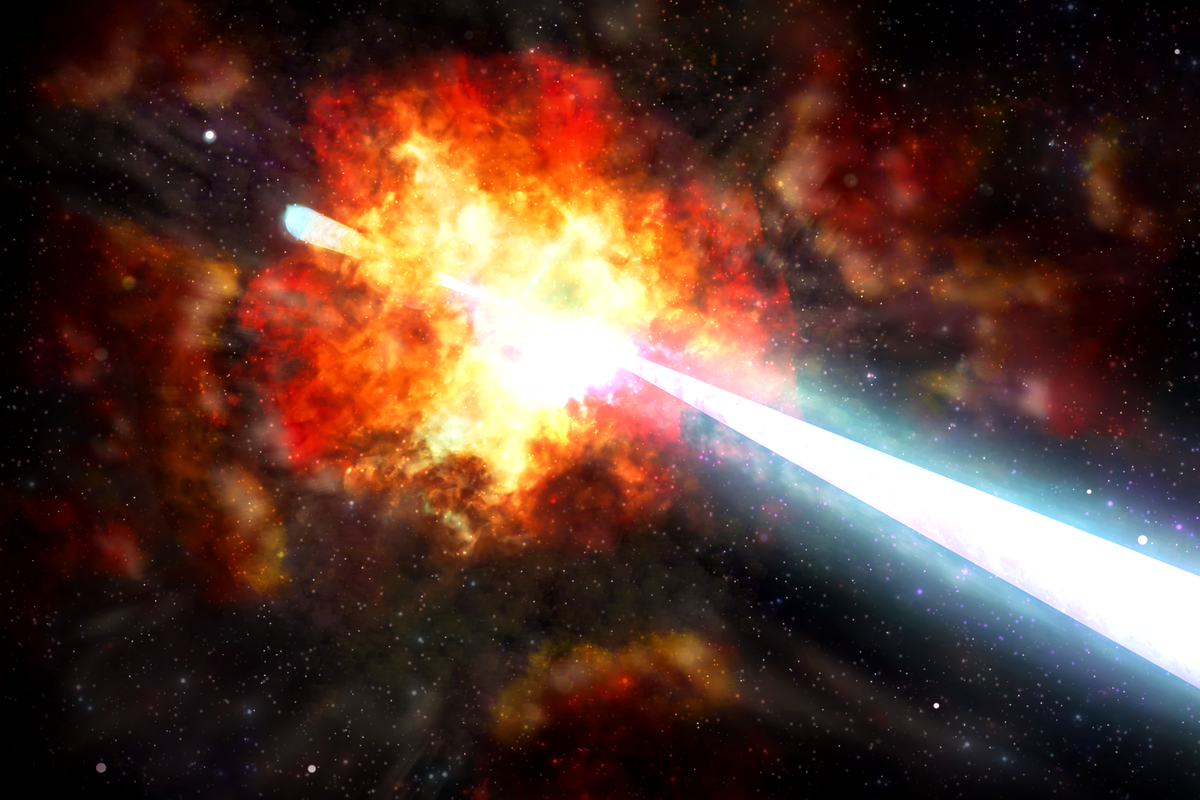
The solar system might have been hit by the brightest explosion ever seen, scientists have said.
The intensity of the blast was such that researchers were unable to properly study it, since it blinded the instruments that would usually be used to measure its intensity.
The pulse of intense radiation began its life in a cosmic explosion two billion light years away from us. Since then, it has been smashing through the universe, reaching our solar system in October last year.
Scientists said this type of event is a gamma-ray burst (GRB) - known for being some of the strongest and brightest explosions in the universe.
This GRB was deemed so exceptional that astronomers said it was the brightest of all time (BOAT) since the beginning of human civilisation.
The researchers said the event, dubbed GRB 221009A, blinded most gamma-ray instruments in space.
This meant astronomers could not measure the real intensity of the emission and had to reconstruct its energy expenditure from past and present data.
An analysis of 7,000 GRBs suggests that GRB 221009A is 70 times brighter than any yet seen and an event like this occurs once every 10,000 years.
Dr Dan Perley, of the Astrophysics Research Institute at Liverpool John Moores University - who followed the event with the University’s Liverpool Telescope on the Spanish island of La Palma, said: “There is nothing in human experience that comes anywhere remotely close to such an outpouring of energy. Nothing.”
Though they last mere seconds, GRBs produce as much energy as the Sun will emit during its entire lifetime.
Dr Perley said the event GRB 221009A produced “a phenomenal amount of energy”, adding: “It’s certainly the highest value ever recorded for a gamma-ray burst.”
According to the European Space Agency (ESA), the blast deposited around a gigawatt of power into Earth’s upper atmosphere - the equivalent of a power station’s energy output.
Astronomers believe GRB 221009A is a result of a massive star collapsing in on itself to form a black hole.
Dr Perley said: “The star would have been many times more massive than the Sun, probably 20 times as massive or more.”
GRBs also produce a supernova but astronomers are yet to ascertain whether that occurred in this case.
It is thought that GRB 221009A was so bright because it was much closer to Earth compared to other known GRBs and the beam of electromagnetic radiation happened to be pointing in the direction of the planet.
Andrew Levan, a professor of astrophysics at Radboud University in Nijmegen, Netherlands, said: “We cannot say conclusively that there is a supernova, which is surprising given the burst’s brightness.
“If it’s there, it’s very faint.
“We plan to keep looking, but it’s possible the entire star collapsed straight into the black hole instead of exploding.”
GRBs are usually followed by a shockwave that emits lower energy radiation, known as an afterglow, that gradually fades over time.
Dr Gavin Lamb, a Royal Society Dorothy Hodgkin Research Fellow at Liverpool John Moores University - who was part of an international team that used Nasa’s James Webb Space Telescope to observe the GRB 221009A afterglow, said the observations provide “a unique insight into the mechanisms responsible for these transient flashes of light”.
He said: “There is a lot more data yet to sift through and we will be looking for clues to explain the relationship between GRBs and supernovae from massive stars, and the dynamics within the afterglow.
“We still don’t fully understand many aspects of such high-energy jets.”
The findings are reported in two separate papers in the Astrophysical Journal and Astrophysical Journal Letters.
Additional reporting by Press Association







